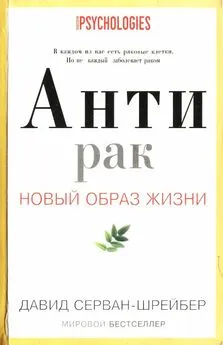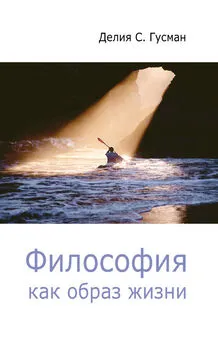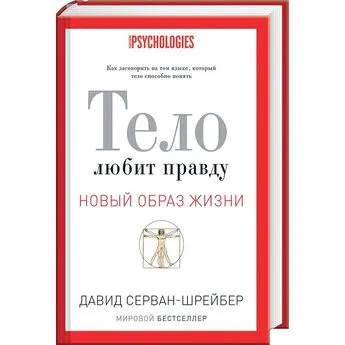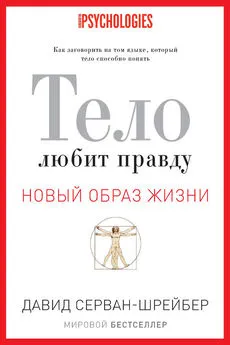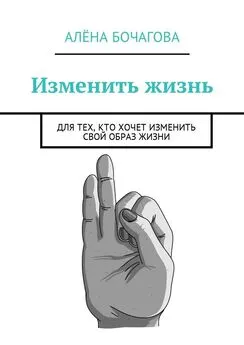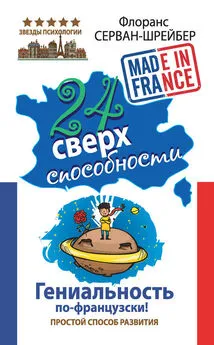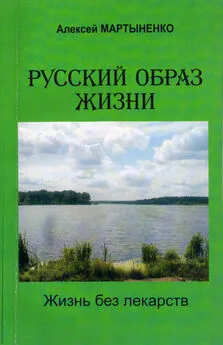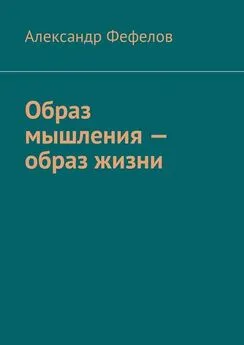Давид Серван-Шрейбер - Антирак. Новый образ жизни
- Название:Антирак. Новый образ жизни
- Автор:
- Жанр:
- Издательство:РИПОЛ классик
- Год:2010
- Город:Москва
- ISBN:978-5-386-02111-5
- Рейтинг:
- Избранное:Добавить в избранное
-
Отзывы:
-
Ваша оценка:
Давид Серван-Шрейбер - Антирак. Новый образ жизни краткое содержание
Антирак. Новый образ жизни - читать онлайн бесплатно ознакомительный отрывок
Интервал:
Закладка:
38. Levy, S., R. Herberman, M. Lippman, et al., “Correlation of Stress Factors with Sustained Depression of Natural Killer Cell Activity and Predicted Prognosis in Patients with Breast Cancer,” Journal of Clinical Oncology 5, no. 3 (1987): 348-53.
39. Lutgendorf, S. K., A. K. Sood, B. Anderson, et al., “Social Support, Psychological Distress, and Natural Killer Cell Activity in Ovarian Cancer,” Journal of Clinical Oncology 23, no. 28 (2005): 7105-13.
40. Servan-Schreiber, D., Healing Without Freud or Prozac—Stress, Anxiety and Depression Without Drugs or Talk Therapy (London: Pan MacMillan, 2004).
41. Servan-Schreiber, D., The Instinct to Heal: Curing Depression, Anxiety and Stress Without Drugs and Without Talk Therapy (New York: Rodale, 2004).
42. Kabat-Zinn, J., Coming to Our Senses (New York: Hyperion, 2005).
43. Rinpoche, S., Le Livre Tibétain de la Vie et de la Mort (Paris: Livre de Poche, 2005).
44. Dekker, J., E. Schouten, P. Klootwijk, et al., “Heart Rate Variability from Short-Term Electrocardiographic Recordings Predicts Mortality from All Causes in Middle-Aged and Elderly Men: The Zutphen Study,” American Journal of Epidemiology 145, no. 10 (1997): 899-908.
45. Tsuji, H., F. Venditti, E. Manders, et al., “Reduced Heart Rate Variability and Mortality Risk in an Elderly Cohort: The Framingham Heart Study,” Circulation 90, no. 2 (1994): 878-83.
46. Bernardi, L., P. Sleight, G. Bandinelli, et al., “Effect of Rosary Prayer and Yoga Mantras on Autonomic Cardiovascular Rhythms: Comparative Study,” British Medical Journal 323 (2001): 1446-49.
47. Thayer, J. F., and E. Sternberg, “Beyond Heart Rate Variability: Vagal Regulation of Allostatic Systems,” Annals of the New York Academy of Sciences 1008 (2006): 361-72.
48. Umetani, K., D. Singer, R. McCraty, et al., “Twenty-four Hour Time Domain Heart Rate Variability and Heart Rate: Relations to Age and Gender over Nine Decades,” Journal of the American College of Cardiology 31, no. 3 (1999): 593-601.
49. Dekker, Schouten, Klootwijk, et al., “Heart Rate Variability from Short-Term Electrocardiographic Recordings . . .”
50. Bernardi, Sleight, Bandinelli, et al., “Effect of Rosary Prayer and Yoga Mantras on Autonomic Cardiovascular Rhythms.”
51. Lutz, A., L. Greischar, N. Rawlings, et al., “Long-term Meditators Self-Induce High-Amplitude Gamma Synchrony During Mental Practice,” Proceedings of the National Academy of Sciences USA 101 (2004): 16369-73.
52. Davidson, R. J., J. Kabat-Zinn, J. Schumacher, et al., “Alterations in Brain and Immune Function Produced by Mindfulness Meditation,” Psychosomatic Medicine 65, no. 4 (2003): 564-70.
53. Rosenkranz, M. A., D. C. Jackson, K. M. Dalton, et al., “Affective Style and in Vivo Immune Response: Neurobehavioral Mechanisms,” Proceedings of the National Academy of Sciences 100 (2003): 11148-52.
54. Gruzelier, J., A. Burgess, T. Baldewig, et al., “Prospective Associations Between Lateralized Brain Function and Immunte Status in HIV Infection: Analysis of EEG, Cognition and Mood over 30 Months,” International Journal of Psychophysiology 23 (1996): 215-24.
55. Kiecolt-Glaser, J. K., R. Glaser, D. Williger, et al., “Psychosocial Enhancement of Immunocompetence in a Geriatric Population,” Health Psychology 4, no. 1 (1985): 25-41.
56. Creswell, J. D., Myers, H. F., Cole, S. W., Irwin, M. R., “Mindfulness Meditation Training Effects on CD4+T Lymphocytes in HIV-1 Infected Adults: A Small Randomized Controlled Trial,” Brain Behav Immun (2008).
57. Gawler, You Can Conquer Cancer.
58. Lillberg, K., P. K. Verkasalo, J. Kaprio, et al., “Stressful Life Events and Risk of Breast Cancer in 10,808 Women: A Cohort Study,” American Journal of Epidemiology 157 (2003): 415-23.
59. Price, M. A., C. C. Tennant, P. N. Butow, et al., “The Role of Psychosocial Factors in the Development of Breast Carcinoma: Part II: Life Event Stressors, Social Support, Defense Style, and Emotional Control and Their Interactions,” Cancer 91, no. 4 (2001): 686-97.
60. Bartrop, R. W., E. Luckhurst, L. Lazarus, et al., “Depressed Lymphocyte Function After Bereavement,” Lancet 1, no. 8016 (1977): 834-36.
61. Ironson, G., C. Wynings, N. Schneiderman, et al., “Posttraumatic Stress Symptoms, Intrusive Thoughts, Loss, and Immune Function After Hurricane Andrew,” Psychosomatic Medicine 59, no. 2 (1997): 128-41.
62. Irwin, M., M. Daniels, S. C. Risch, et al., “Plasma Cortisol and Natural Killer Cell Activity During Bereavement,” Biological Psychiatry 24, no. 2 (1988): 173-78.
63. Weisberg, R. B., S. E. Bruce, J. T. Machan, et al., “Nonpsychiatric Illness Among Primary Care Patients with Trauma Histories and Posttraumatic Stress Disorder,” Psychiatric Services 53, no. 7 (2002): 848-54.
64. Dong, M., W. H. Giles, V. J. Felitti, et al., “Insights into Causal Pathways for Ischemic Heart Disease: Adverse Childhood Experiences Study,” Circulation 110, no. 13 (2004): 1761-66.
65. Dew, M., R. Kormos, L. Roth, et al., “Early Post-Transplant Medical Compliance and Mental Health Predict Physical Morbidity and Mortality 1-3 Years After Heart Transplantation,” Journal of Heart and Lung Transplantation 18 (1999): 549-62.
66. Felitti, V., R. Anda, D. Nordenberg, et al., “Relationship of Childhood Abuse and Household Dysfunction to Many of the Leading Causes of Dealth in Adults,” American Journal of Preventive Medicine 14 (1998): 245-58.
67. American Psychiatric Association, Guidelines for the Psychiatric Treatment of Acute Stress Disorder and Posttraumatic Stress Disorder (Washington: American Psychiatric Association, 2004).
68. Bradley, R., J. Greene, E. Russ, et al., “A Multidimensional Meta-Analysis of Psychotherapy for PTSD,” American Journal of Psychiatry 162 (2005): 214-27.
69. Bisson, J. I., A. Ehlers, R. Matthews, et al., “Psychological Treatments for Chronic Post-Traumatic Stress Disorder: Systematic Review and Meta-Analysis,” British Journal of Psychiatry 190 (2007): 97-104.
70. Antoni, Lutgendorf, Cole, et al., “The Influence of Bio-Behavioral Factors on Tumour Biology.”
71. Reiche, E. M. V., S. O. V. Nunes, and H. K. Morimoto, “Stress, Depression, the Immune System, and Cancer,” Lancet Oncology 5, no. 10 (2004): 617-25.
72. Petrie, K., R. Booth, J. Pennebaker, et al., “Disclosure of Trauma and Immune Response to Hepatitis B Vaccination Program,” Journal of Consulting & Clinical Psychology 63 (1995): 787-92.
73. Zaslow, J., The Girls from Ames: A Story of Women and Friendship (New York: Penguin Group, 2009).
74. Parker-Pope, T., “What Are Friends For? A Longer Life,” New York Times , April 21, 2009.
75. Kroenke, C. H., et al., “Social Networks, Social Support, and Survival After Breast Cancer Diagnosis,” Journal of Clinical Oncology 24, no. 7 (2006): 1105-11.
76. Orth-Gomer, K., A. Rosengren, and L. Wilhelmsen, “Lack of Social Support and Incidence of Coronary Heart Disease in Middle-Aged Swedish Men,” Psychosomatic Medicine 55, no. 1 (1993): 37-43.
77. Lerner, Choices in Healing.
78. Solomon, S., E. T. Gerrity, and A. M. Muff, “Efficacy of Treatments for Posttraumatic Stress Disorder,” JAMA 268 (1992): 633-38.
79. Brady, K., T. Pearlstein, G. Asnis, et al., “Efficacy and Safety of Sertraline Treatment of Posttraumatic Stress Disorder,” JAMA 283 (2000): 1837-44.
80. Davidson, J. R. T., B. O. Rothbaum, B. Van Der Kolk, et al., “Multicenter, Double-Blind Comparison of Sertraline and Placebo in the Treatment of Posttraumatic Stress Disorder,” Archives of General Psychiatry 58 (2001): 485-92.
81. Asnis, G. M., S. R. Kohn, M. Henderson, et al., “SSRIs Versus Non-SSRIs in Post-Traumatic Stress Disorder: An Update with Recommendations,” Drugs 64, no. 4 (2004): 383-404.
82. van Etten, M.L. and S. Taylor, “Comparative Efficacy of Treatments for Post Traumatic Stress Disorder: A Meta-Analysis,” Clinical Psychology & Psychotherapy 5 (1998): 126-144.
83. Maxfield, L., and L. A. Hyer, “The Relationship Between Efficacy and Methodology in Studies Investigating EMDR Treatment of PTSD,” Journal of Clinical Psychology 58 (2002): 23-41.
84. Sack, M., W. Lempa, and F. Lamprecht, “Study Quality and Effect Sizes—a Meta-Analysis of EMDR Treatment for Posttraumatic Stress Disorder,” Psychother apie, Psychosomatik, Medizinische Psychologie 51, no. 9-10 (2001): 350-355.
85. Expertise Collective INSERM, et al., Psychothérapie: Trois approches évaluées, eds., INSERM Unité d’Evaluation et d’Expertise Collective, et al., Paris: 2004, Institut National de la Santé et de la Recherche Médicale France, 2004.
86. Shapiro, F., Eye-Movement Desensitization and Reprocessing: Basic Principles, Protocols and Procedures (New York: Guilford, 2001).
87. Kübler-Ross, E., On Death and Dying (New York: Touchstone, 1969).
88. Bisson, J. and M. Andrew, “Psychological Treatment of Post-Traumatic Stress Disorder (PTSD) (Review),” Cochrane Database of Systematic Reviews , no. 3 (2007): CD004046.
89. Shapiro, F., Manuel d’EMDR (Intégration neuro-émotionnelle par les mouve ments oculaires)—principes, protocoles, procédures (Paris: Dunod, 2007).
90. Stickgold, R., “EMDR: A Putative Neurobiological Mechanism,” Journal of Clinical Psychology 58 (2002): 61-75.
91. Anderson, B. L., et al., “Psychological, Behavioral, and Immune Changes After a Psychological Intervention: A Clinical Trial,” Journal of Clinical Oncology 22, no. 17 (2004): 3570-80.
92. Anderson, B. L., et al., “Distress Reduction from a Psychological Intervention Contributes to Improved Health for Cancer Patients,” Brain, Behavior, & Immunity 21, no. 7 (2007): 953-61.
93. Thornton, L. M., et al., “Individual Trajectories in Stress Covary with Immunity During Recovery from Cancer Diagnosis and Treatments,” Brain, Behavior, & Immunity 21, no. 2 (2007): 185-94.
Глава 10
1. Peck, M. S., Further Along the Road Less Travelled: Going to Omaba—The Issue of Death and Meaning (New York: Simon and Schuster Audio, 2004).
2. Nuland, S. B., Mourir: Reflexions sur le Dernier Chapitre de la Vie (Paris: Interé ditions, 1994).
3. Johanson, G. A., Physician’s Handbook of Symptom Relief in Terminal Care (Sonoma County, CA: Home Hospice of Sonoma County, 1994).
4. Frankl, V. E., Découvrir un sens à sa vie (Montréal, QC: Editions de l’Homme, 2005).
5. Ring, K., Heading Toward Omega: In Search of the Meaning of the Near-Death Experience (New York: Morrow, 1985).
6. Van Lommel, P., R. van Wees, V. Meyers, et al., “Near-Death Experience in Survivors of Cardiac Arrest: A Prospective Study in the Netherlands,” Lancet 358, no. 9298 (2001): 2039-45.
7. Rinpoche, S., The Tibetan Book of Living and Dying (San Francisco: Harper-Collins, 1992).
8. Spiegel, D., “A 43-Year-Old Woman Coping with Cancer,” JAMA 282, no. 4 (1999): 371-78.
9. House, J. S., K. R. Landis, and D. Umberson, “Social Relationships and Health,” Science 241 (1988): 540-45.
10. House, J. S., C. Robbins, and H. L. Metzner, “The Association of Social Relationships and Activities with Mortality: Prospective Evidence from the Tecumseh Community Health Study,” American Journal of Epidemiology 116, no. 1 (1982): 123-40.
Читать дальшеИнтервал:
Закладка:
